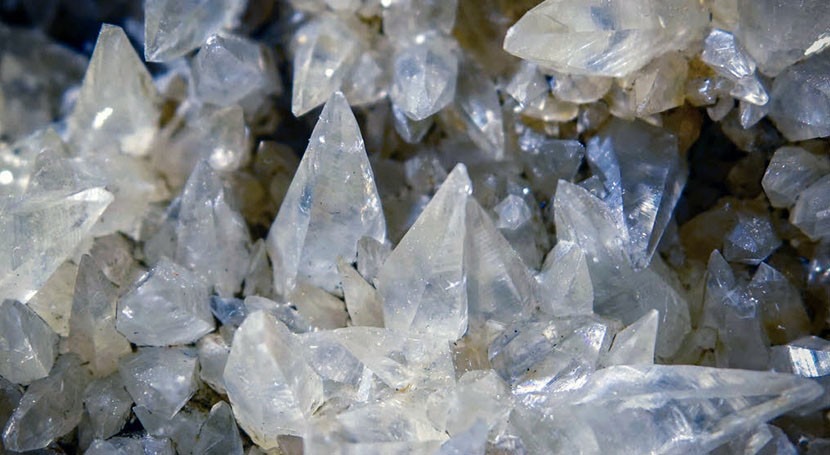- Deep anoxic aquifers could act as sinks for uranium through microbial-assisted mineral trapping
- Deep anoxic aquifers could act as sinks for uranium through microbial-assisted mineral trapping
Communications Earth & Environment 4, Article number: 128 (2023)
Communications Earth & Environment 4, Article number: 128 (2023)
Abstract
Uptake of uranium (U) by secondary minerals, such as carbonates and iron (Fe)-sulfides, that occur ubiquitously on Earth, may be substantial in deep anoxic environments compared to surficial settings due to different environment-specific conditions. Yet, knowledge of U reductive removal pathways and related fractionation between 238U and 235U isotopes in deep anoxic groundwater systems remain elusive. Here we show bacteria-driven degradation of organic constituents that influences formation of sulfidic species facilitating reduction of geochemically mobile U(VI) with subsequent trapping of U(IV) by calcite and Fe-sulfides. The isotopic signatures recorded for U and Ca in fracture water and calcite samples provide additional insights on U(VI) reduction behaviour and calcite growth rate. The removal efficiency of U from groundwater reaching 75% in borehole sections in fractured granite, and selective U accumulation in secondary minerals in exceedingly U-deficient groundwater shows the potential of these widespread mineralogical sinks for U in deep anoxic environments.
READ ON/DOWNLOAD PDF
Uptake of uranium (U) by secondary minerals, such as carbonates and iron (Fe)-sulfides, that occur ubiquitously on Earth, may be substantial in deep anoxic environments compared to surficial settings due to different environment-specific conditions. Yet, knowledge of U reductive removal pathways and related fractionation between 238U and 235U isotopes in deep anoxic groundwater systems remain elusive. Here we show bacteria-driven degradation of organic constituents that influences formation of sulfidic species facilitating reduction of geochemically mobile U(VI) with subsequent trapping of U(IV) by calcite and Fe-sulfides. The isotopic signatures recorded for U and Ca in fracture water and calcite samples provide additional insights on U(VI) reduction behaviour and calcite growth rate. The removal efficiency of U from groundwater reaching 75% in borehole sections in fractured granite, and selective U accumulation in secondary minerals in exceedingly U-deficient groundwater shows the potential of these widespread mineralogical sinks for U in deep anoxic environments.
READ ON/DOWNLOAD PDF

Credit: Linnaeus University
26/04/2023
Linnaeus University
Linnaeus University is located in Växjö and Kalmar
A new research study describes a previously unknown chemical process for removal of uranium from groundwater. Deep down in the bedrock, in an oxygen-free environment, microbes assist in the process of turning uranium “into rock”. This finding might be an important tool for inhibiting the spread of toxic uranium in groundwater.
Uranium is a radioactive element that occurs naturally in the bedrock, and is harmful to humans and ecosystems. Exposure through drinking water, for example from drilled wells in bedrock, may lead to renal and reproductive effects, as well as DNA damage.
– Uran-rich drinking water is a major global health issue. To inhibit the spread of uranium in groundwater is a topic of high concern, says Henrik Drake, Associate Professor in Environmental Science, Linnaeus University, Sweden, and senior author of the study.
Minerals entrapped uranium
In a 17 years long experiment, the team of researchers explored deep boreholes drilled into the bedrock, and identified minerals that had entrapped large amounts of uranium. It turned out that microbes living in the oxygen-free environment were the key to the process.
The microbes produce substances that help to transform the uranium, so that it is more easily incorporated into minerals. This sink stabilizes the uranium, and restrain further transport with groundwater.
Ivan Pidchenko, post doctoral fellow at the Linnaeus University, and lead author of the study, explains the discovery:
– The findings suggest that naturally occurring bacteria affect the uranium removal. The microbes contribute to form sinks for toxic elements in the subsurface environment. This process has large potential to prevent the spread of hazardous elements in the environment.
The results are important for remediation of contaminated groundwater, but also for spent nuclear fuel repositories.
– Uranium is the main component in spent nuclear fuel that will be deposited in long-term geological storage in deep bedrock systems. Our finding is an additoinal brick to the foundation of long-term safety assessment of geological nuclear repositories planned for construction in Sweden and elsewhere, says Ivan Pidchenko.
Impact of microbial processes on the safety of deep geological repositories for radioactive waste
Front Microbiol. 2023; 14: 1134078.
Abstract
To date, the increasing production of radioactive waste due to the extensive use of nuclear power is becoming a global environmental concern for society. For this reason, many countries have been considering the use of deep geological repositories (DGRs) for the safe disposal of this waste in the near future. Several DGR designs have been chemically, physically, and geologically well characterized. However, less is known about the influence of microbial processes for the safety of these disposal systems. The existence of microorganisms in many materials selected for their use as barriers for DGRs, including clay, cementitious materials, or crystalline rocks (e.g., granites), has previously been reported. The role that microbial processes could play in the metal corrosion of canisters containing radioactive waste, the transformation of clay minerals, gas production, and the mobility of the radionuclides characteristic of such residues is well known. Among the radionuclides present in radioactive waste, selenium (Se), uranium (U), and curium (Cm) are of great interest. Se and Cm are common components of the spent nuclear fuel residues, mainly as 79Se isotope (half-life 3.27 × 105 years), 247Cm (half-life: 1.6 × 107 years) and 248Cm (half-life: 3.5 × 106 years) isotopes, respectively. This review presents an up-to-date overview about how microbes occurring in the surroundings of a DGR may influence their safety, with a particular focus on the radionuclide-microbial interactions. Consequently, this paper will provide an exhaustive understanding about the influence of microorganisms in the safety of planned radioactive waste repositories, which in turn might improve their implementation and efficiency.
READ ON/DOWNLOAD PDF

No comments:
Post a Comment